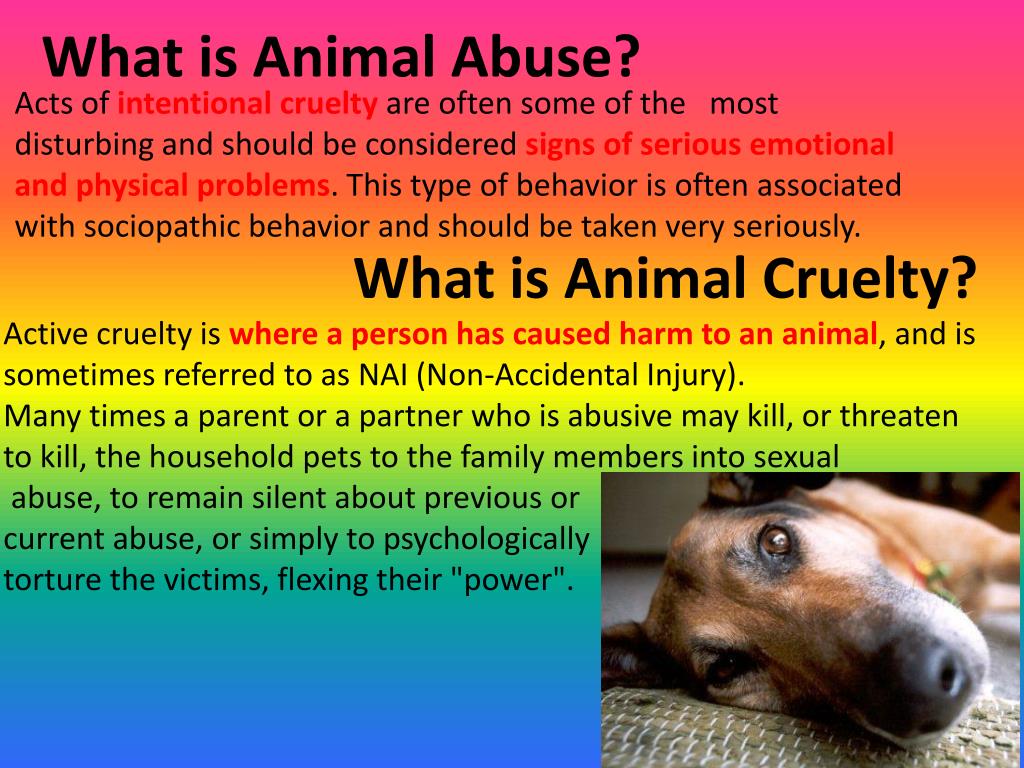The discourse surrounding animal abuse often oscillates between the overtly egregious acts of cruelty and what some may refer to as ‘minor’ abuse. The stark reality, however, is that the distinction between these categories is not merely semantic; it bears profound implications for how societies recognize and respond to the myriad forms of suffering inflicted upon non-human animals. At the heart of this inquiry lies an unsettling yet prevalent societal notion: can an act of animal abuse ever truly be classified as minor? This article seeks to interrogate that perspective by outlining the resonant significance of every act of cruelty, no matter how seemingly trivial.
The notion of ‘minor’ animal abuse often arises from cultural perceptions of acceptable behavior toward animals. Practices that may be normalized in certain communities—such as neglect, tethering, and even certain forms of experimentation—can be dismissed as inconsequential when juxtaposed with overt cruelty like physical violence or systemic exploitation within factory farming. This societal selective amnesia allows for the persistence of such behaviors, masquerading as benign while leaving a trail of psychological and physical trauma.
To understand the ramifications of this perspective, it is crucial to delve into the psychological framework underpinning our interactions with animals. Human-animal relationships are steeped in both emotional and utilitarian dynamics. The bond that people form with animals can evoke empathy and compassion, yet simultaneously permit the erosion of moral boundaries under the guise of minor infractions. For instance, failing to provide adequate social interaction or medical care to a pet may be regarded as a minor oversight rather than a prelude to severe neglect. However, what goes unnoticed in these quotidian neglects is the potential for gradual emotional and physical harm, profoundly affecting the animal’s quality of life.
Moreover, examining the broader implications of ‘minor’ acts of cruelty illuminates a worrisome trend in societal desensitization. When minor abuses are trivialized, they set a precedent that can normalize more severe forms of violence. Research in the field of criminology has established a correlation between animal cruelty and violence against humans. Histories of minor transgressions often escalate into major offenses, indicating a slippery slope where desensitization breeds a culture that lightly skirts ethical considerations. By accepting ‘minor’ abuse as permissible, society inadvertently cultivates a breeding ground for more grievous violations.
Viewing animal abuse through a psychological lens also reveals deeper societal undercurrents. The normalization of certain harmful behaviors—like perpetual confinement of animals or exploitation for entertainment—can stem from systemic issues such as economic disparity or cultural traditions that fail to value animal sentience. These narratives frame animals as mere resources or commodities, leading to a shockingly cavalier approach toward their welfare. Such attitudes not only perpetuate cruelty but also reflect broader deficiencies within human ethical frameworks.
Concurrently, the semantics of ‘minor’ serves as a diversionary tactic, deflecting responsibility from individuals and communities. The classification enforces a false dichotomy that undermines the totality of suffering caused by even seemingly benign acts. A pivotal aspect of the animal rights movement is founded on the recognition that every act of cruelty, regardless of its scale, contributes to a continuum of violence that permeates society. This is also why supportive legislation and educational initiatives have begun mounting in diverse environments—from schools to animal welfare organizations—highlighting the pernicious impact of composed complacency.
A critical approach to alleviating animal suffering necessitates a paradigm shift. This involves re-evaluating the foundations upon which we build our interactions with animals. Even the term ‘minor’ must be discarded in favor of a holistic understanding of animal welfare. Compassionate engagement with animals must transcend merely avoiding overt cruelty; it should entail a commitment to enhancing their welfare on all fronts. This is particularly crucial in light of the interwoven fabric of societal attitudes toward both animals and marginalized human populations. The normalization of ‘minor’ abuse can often reverberate in other forms of discrimination—demonstrating that issues of power and control are universal.
Efforts to recalibrate societal perceptions about animal welfare must include dispelling myths about ‘minor’ abuses. Education campaigns focused on promoting awareness and empathy can facilitate a fundamental shift in how such behaviors are perceived. Encouraging societal leaders to reject the trivialization of suffering can provoke a public dialogue that challenges comfortable complacency. Empowering individuals through advocacy not only humanizes the cause but also builds coalitions among various stakeholders—bringing together lawmakers, concerned citizens, and animal welfare organizations to push for more robust protection of animals.
In conclusion, the question of whether there can be ‘minor’ animal abuse highlights critical cultural and ethical rifts that need to be addressed. Each transgression, regardless of scale, contributes to a larger narrative of suffering and exploitation that demands our attention and action. Our moral obligations toward animals should compel us to examine the implications of our behaviors and challenge societal norms that perpetuate cruelty, regardless of its classification. Every act—whether perceived as minor or major—matters deeply, resonating far beyond the immediate context and contributing to a broader conversation about empathy, responsibility, and justice for all living beings.










